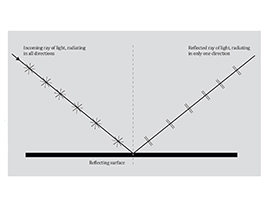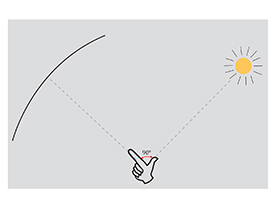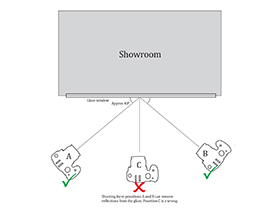
SP reader Arijit Das had requested us to explain, in Ask Uncle Ronnie, how to correctly use a polarising filter. Since the explanation is rather lengthy, we decided to have a separate write-up on it.
Rohinton Mehta
A polarising filter is one of the three very important filters for use in digital photography – the other two being the Neutral Density and Graduated Neutral Density filter. Used correctly, a polarising filter reduces atmospheric haze, removes glare, saturate colours, deepens blue sky and to a certain extent increases shadow details.
First things first. There are two types of polarising filters: Linear and Circular. Don’t confuse the ‘Circular’ variety as being round in shape and the other, some other shape. Both are round in shape! The difference lies in the way they are constructed. Film SLRs (with some exceptions) used the Linear Polariser. With the advent of digital SLRs, it became necessary to have a Circular polarising filter.
Note: The physics involved in understanding ‘polarisation of light’ and how a Circular Polariser (CPL) actually works, is, to say the least, beyond the scope of this article. The explanation given below is oversimplified and hence from a point of view of those deeply involved in physics, may not be entirely correct. Those who want to delve deep in its theory, can look up a highly technical write-up by Bob Atkins (www. bobatkins.com)

 See the sketch below. The incoming ray of light is un-polarised light (vibrating in all directions). When it gets reflected off any surface, it gets polarised (vibrates in any one direction only). Now if you were to place a polarising filter in the path of the polarised light, depending on the angle of polarisation, it could partially, or to a great extent, block the light, thereby also reducing the reflection from the surface. This is basically how a polariser works.
See the sketch below. The incoming ray of light is un-polarised light (vibrating in all directions). When it gets reflected off any surface, it gets polarised (vibrates in any one direction only). Now if you were to place a polarising filter in the path of the polarised light, depending on the angle of polarisation, it could partially, or to a great extent, block the light, thereby also reducing the reflection from the surface. This is basically how a polariser works.
Modern D-SLRs use a reflex mirror that reflect some amount of light to the metering system and the viewfinder, and also transmit some light to the AF sensors. If you were to use a Linear Polariser on such a camera, there could be metering errors as well as autofocussing errors. Hence, with D-SLRs, we need to use a Circular Polariser.
Note: You can safely use a Linear Polariser with mirrorless cameras; there is no mirror where the problemcausing secondary polarisation could take place. Note also that you can use a CPL with film cameras.
Any filter placed in front of the lens causes a loss in the amount of light entering the lens. Since all modern cameras use Through-the-Lens (TTL) metering, this problem is automatically taken care of. Typically, a polariser reduces about 1.5 -2 stops of light.
To darken a blue sky
Note that, using a polarising filter, you can darken a blue sky, not a grey sky (grey skies will of course darken if you underexpose it!)
To darken a blue sky with a polariser, the axis of the lens should be at 90 degrees to the sun. See the sketch. The thumb is pointing to the sun; the area of the sky along the arc created by the index finger will be darkened.
In an emergency, a polarising filter can be used instead of a neutral density filter.

To remove/reduce reflection
The polarising filter can be used to get rid of annoying reflections from glass, wood, water, paper, and painted metal (it cannot remove reflections from bare metal). For this to work, the polariser-mounted lens should make an angle of approximately 40 degrees to the reflecting surface. See sketch. If you stand bang opposite the glass, you will not be able to get rid of the reflections.
Try this out on show-windows, water bodies or try to see who’s at the steering wheel in a parked car.
To saturate colours in a landscape shot
Reflections from the leaves of trees cause a loss of contrast and colour. Since a polariser cuts reflections, it removes the effect of glare, saturates the colours and increases contrast.
Additionally, it reduces the effects of atmospheric haze (does not eliminate it completely).
Increases shadow details
The fact that the polariser cuts reflections and the fact that you need to increase exposure by 1.5 – 2 stops (which the camera does automatically in TTL exposure mode), you will actually see a bit more details in the subject. |SP
CONCLUSION
The polarising filter is probably the most important filter for a digital photographer. Do note that cheap PL filters could cause unwanted colour casts in your pictures and hence you are adviced to stick to the known brands, even though they may be expensive.

